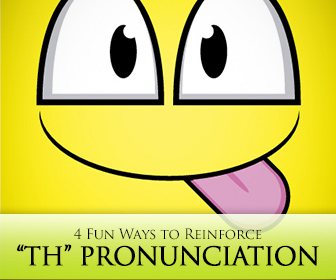
“Th” pronunciation is extremely difficult to master for EFL students.
When tongue twisters and other tricks are failing and you need a change in strategy, try one of these four activities. They are also great class starters or energizers after a long grammar session!

Use These Fresh Activities to Make a Real Change
-
1
Think about This Thing
Using three dimensional objects is more demonstrative, and it will probably be more interesting depending on how strange the items are.Create a game where students have to guess what the uses of five different objects are. You can design a slideshow with pictures of strange contraptions from the Internet, or you can bring unique items from your home into class. Using three dimensional objects is more demonstrative, and it will probably be more interesting depending on how strange the items are. For examples, bring in your cat litter scooper, your homemade plastic bag storage device, and the bracelet your five year old made for you that is two times too big to be a bracelet but entirely too small to be anything else.
Then, tell students to “think about this thing” and show each item. Ask the first student, “What do you think this thing is?” and give him one guess. He has to use the “th” words in his response: “I think that thing is a…” Then, move on to each student until one guesses correctly! You can add hints if your objects are especially challenging.
This game will make students listen to you repeatedly pronounce th words correctly as well as make them practice the pronunciation. It also helps reinforce the difference between “this” and “that”.
-
2
Th-esaurus
If you need a quick energizer after a break or in the middle of a long grammar lesson, separate the class into two groups. Have them line up and face each other. Prepare a list of words that have at least one common thesaurus word that begins with th, like believe (think), cheap (thrifty), cinema (theater), and grateful (thankful). The first student that thinks of a thesaurus word gets a point for her team!
-
3
Where Are They?
Practice there/their/they’re homophones and th pronunciation in one game! Bring a picture of a group of people or a cut out from a magazine into class. Also prepare cutouts or pictures of different places, like a beach, a car, a school, etc. Tape the places to the board or on a visible wall. Then, have the students take turns with the group picture and picking a destination to visit by coming to the front of the class or to the wall and standing below a destination. Explain that all of the destinations are theirs.
Serve as an example first, by going to the house with the group picture in front of you and asking, “Where are they?” Have the students take turns responding in order. They should respond, “They are in their house.” Explain that, if they forget the place vocabulary, they can use the generic “there” as in “They are there.” Stay in a place until a student gets the correct name of the location though!
-
4
Throw Through for Three
You will need a hula hoop or other similar structure and a ball for this activity. Explain that “throw through” in English is an idiom derived from baseball where a player should always be thorough and complete the play by throwing the ball back to where it belongs. It is a measure to be extra cautious even if one thinks they have already finished something, like send that extra email, or give that extra follow-up call to a client even after a job is done, etc.
Split the class into two groups, and have them line up. Standing on the opposite side of the hoop from them, they should instruct you, “Throw through!” Toss the ball through the hoop to the student and ask questions where they have to name three vocabulary words in a category in three seconds. Use family, body parts, colors, or more advanced concepts depending on their level. If they name three, say, “Throw through!” Instruct them that they should throw the ball back to you on the other side. They will earn three points for their team if they complete the cycle correctly. If not, have them pass the ball to the next player and give him the opportunity to answer correctly.
Th pronunciation is difficult for EFL learners and hence needs to be reinforced vigilantly!
Couple th practice with energizing your class, applying vocabulary, and enabling quick thinking cognitive skills development all at the same time with these easy to prepare activities.
P.S. If you enjoyed this article, please help spread it by clicking one of those sharing buttons below. And if you are interested in more, you should follow our Facebook page where we share more about creative, non-boring ways to teach English.







